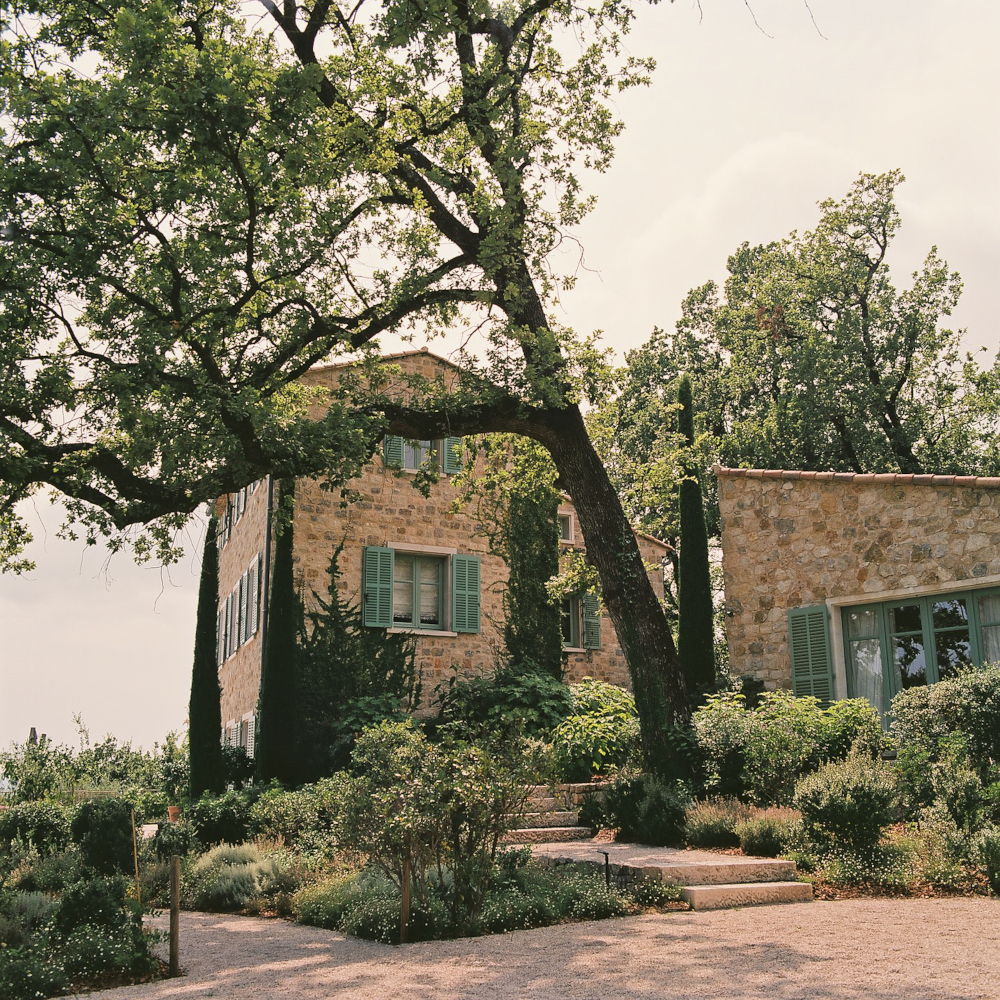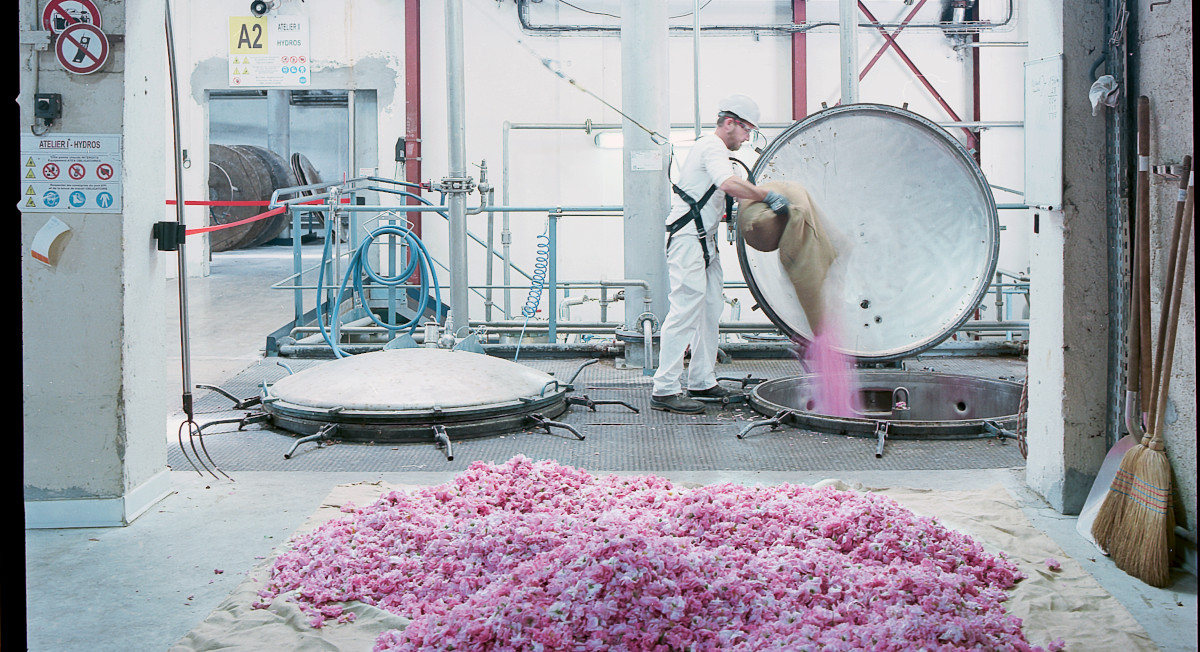Cette publication est également disponible en :
Français
Editorial partnership
Although dsm-firmenich is best known for its expertise in synthetic molecules, the composition house has been present in Grasse since 2007. It has gradually put down roots in the town, culminating in 2020 with the acquisition of Villa Botanica, a nature-rich haven open to perfumers and clients the following year. It is now releasing a book that tells the story of this journey and reveals the four-season symphony at the heart of the world’s perfume capital.
dsm-firmenich is often thought of in terms of creating synthetic molecules, a field that it pioneered. Its story began in 1895 in Geneva, far from the flower-filled fields, when chemist Philippe Chuit teamed up with businessman Martin Naef. This was a period that saw the emergence of the first synthetic ingredients, paving the way for modern perfumery. Working in premises rented by Charles Firmenich, they developed a manufacturing process for vanillin, creating molecules that went on to become iconic. Like orris-violet-scented Iralia that featured in the Diantine base, without which the wonderful Origan from Coty (1905) would never have existed. The next step was a research centre headed by Leopold Ruzicka, who won a Nobel Prize in 1939 for his work on musks.
His technical expertise also helped the company identify the best extraction methods for natural raw materials. These days, supercritical fluid extraction (also known as CO2 extraction) is talked up as an innovation. But we should remember that it was introduced at scale by dsm-firmenich for aromatic applications as early as 1994, with developments that included a pink pepper extract used in the composition for Estée Lauder’s Pleasures. In 2021, the company also unveiled an electromagnetic extraction process named Firgood. The new technique uses water already present in biomass without adding any solvents and requiring very little energy. And the company has succeeded in devising extracts with an unprecedented degree of olfactory purity, finding the voice of once-silent flowers.
A pioneer in synthetic ingredients and in extraction methods for natural ingredients, dsm-firmenich embodies the interdependencies between these two types of materials, which are so often seen as being in opposition. In the words of Fabrice Pellegrin, Principal Perfumer & Director of Natural Product Innovation at dsm-firmenich: “This opposition has no place in our profession: synthetics provide modernity, naturals offer poetry; we definitely need both to create.” As we have explained before, naturals and synthetics always go hand in hand. Synthesis often results from the study of natural ingredients, either because they allow us to identify the odorous bodies that will then be synthesized, or because they serve as the basis for the reactions used to obtain molecules.
The work on naturals that has been central to the company’s mission for over two decades is gorgeously illustrated by Philippe Frisée’s photographs in the book Grasse – De la fleur au parfum, recently published by Gallimard. An ideal platform for dsm-firmenich to tell the tale, in the words of Lionel Paillès, of its role in perfumery’s capital across each of the four seasons that nurture the crops and dictate the rhythm of production. Fields of centifolia rose, lavender, jasmine grandiflorum and mimosa are interwoven with the gleaming metal of extraction workshops and white coats of the technical teams: a beautiful book designed like an essence, a distillation of the company’s sixteen years in the Provençal town.
The company first arrived in 2007 thanks to its acquisition of Danisco, a flavours specialist. Pierre Ruch, current Site Director for dsm-firmenich in Grasse and Director of Operations, was formerly with the Danish company. He recalls the early years: “After the takeover, the decision was taken to create a centre of excellence for natural ingredients, which involved locating all the buyers there, alongside the innovation and research and development activities, so we could run pilot trials. When you’re dealing with naturals, you need the entire team on site: the different stages are all interlinked, it’s a complete ecosystem. There are now 150 of us at the site.” Fabrice Pellegrin adds: “Having all the transformation systems on site is a real opportunity: we can produce at the laboratory level and at the industrial level. It really saves time in developing new products, which already takes several years.” The Tourrettes factory is where local plants are extracted – plants that are grown by recognised local producers, such as the Rebuffels: in the early 2000s, dsm-firmenich committed to buying their entire production of centifolia rose. By establishing itself in the cradle of perfumery with its rich past, the company is also looking to the future: partnerships are always for the long term, ensuring that supplies are secured even in years when harvests are disappointing.
But not everything can be produced in Grasse: raw materials often come from farther afield. dsm-firmenich has put in place a system of joint-venture partnerships, where it owns stakes, with the best at-source producers on each continent. “I oversaw the first partnership we set up with Jasmine Concrete in India in 2014, and with Nelixia in Guatemala in 2018,” explains Pierre Ruch. “And we have just signed a promising new partnership in Madagascar. We offer a guarantee of financial stability thanks to our collaboration contracts, and we are also able to share our extraction expertise with our partners. But they are in charge on the ground.” This policy makes dsm-firmenich the composition house with by far the largest portfolio of ingredients available to its perfumers, naturals as well as synthetics.
The perfumers, including Fabrice Pellegrin, are also the ones who select the next materials that will extend their palette. “The producers bring us their new biomasses, and we find the best way to extract them. After an initial selection, we organise a meeting for the senior perfumers at the Villa Botanica, an idyllic place the company purchased in 2020.” The Villa Botanica is a Provençal country house with a multitude of perfume plants growing all around it and stunning views over the bay of Cannes. A 100m2 greenhouse is a recent addition: inside, the air is laden with the smells of many exotic plants from different parts of the world that are part and parcel of the perfumers’ palette.

For Fabrice Pellegrin, who led the project, the place is perfect: “It’s an absolute haven that doesn’t exist anywhere else. It has three functions: it’s a unique workplace for our perfumers, who have everything they need for their trials and weighing, but in an extraordinary environment where they feel at home. It’s also a magnificent reception space for our clients who, for example, can hold their product launches there. And it has an educational role: creators and clients can find plants there that are part of the compositions.” What better way of showcasing his native town? When he presented the project, the dsm-firmenich team immediately understood its full potential. They were closely involved in setting it up and shrewdly chose the best people to bring onboard: for example, landscape gardener Antoine Leclef is in charge of what looks like a true Garden of Eden.
The company is bubbling with ideas for the years to come, including the goal of turning Villa Botanica into the “Villa Médicis of perfume”, where perfumers and other creators will be able to come to share ideas and inspiration. And this is where Fabrice Pellegrin invited Michelin-starred chef Akrame Benallal when they teamed up to create Adorem, a fragrance in the 1+1 collection developed by Nez. This vision for the future perfectly illustrates dsm-firmenich’s goal in putting down roots in Grasse: paying tribute to nature, protecting it, and enhancing it with artistic creations made possible by technological progress.
Main picture: © Philippe Frisée








Comments